
Pay-tv, But what are we paying for?
Pay-TV, Pay-tv, But what are we paying for?
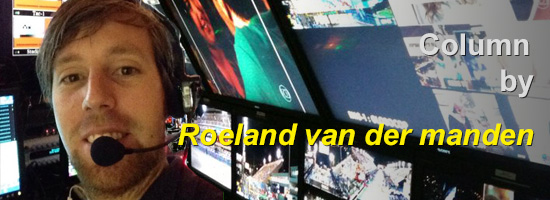
This time I want to talk about the rights on pay-tv. In Brazil there are many pay-tv channels not to talk about the sports and movie channels. All those channels people have to pay for to watch as the name describes.
But what are we paying for?
Let's pick GNT for example. This is one of the biggest pay channels in the country and yet they show so little. People pay for reprises. Some programs have 2 seasons a year and they are being repeated over and over throughout the year. And that's the case for almost all channels. If you see the programming for a week the same episode passes sometimes 3 to 4 times.

It's a vicious circle. Because of this people will more and more move to platforms as Netflix where they can watch tons of new content every day and these pay channels will lose more viewers and make less money. That’s a real threat. So pay channels need to invest more in new content, especially now it’s crisis in Brazil and people will spend more time watching tv at home instead of going out.
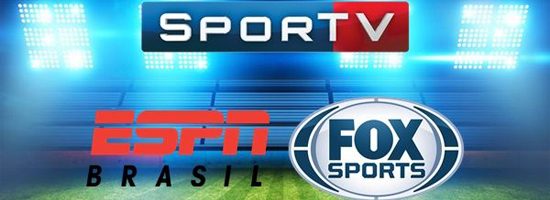
That brings me to another part of pay-tv. In Brazil among a growing amount of other countries people have to pay to watch live sports. We have nowadays FOX sports, ESPN, Esporte Interativo and SporTV in Brazil. Besides those channels there is as well Premiere. Premiere is a pay per view channel where you can watch only some soccer matches. These are matches from the same championship as the matches that pass on SporTV and FOX sports for example.
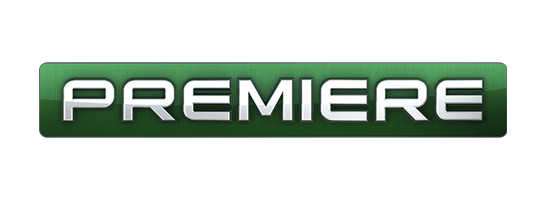
For example, a viewer from Rio de Janeiro can’t watch in many occasions the match of their favorite team from Rio. Those matches are blocked for the state of Rio but in the rest of the country you can watch those matches on SporTV. So the matches are only blocked in the state of the home team or the state where the match is being played. The viewers who want to see the match of their favorite teams are obliged to buy the game at the pay per view channel even if they bought a package of sports channels at their provider. That is for me the biggest example of screwing your viewers. You can see all soccer matches except for the ones that you really would like to see. Imagine a Chelsea fan who pays monthly to watch the matches in the premiere league but he can watch all matches except the ones from Chelsea. To watch a match of Chelsea he needs to buy a pay per view.
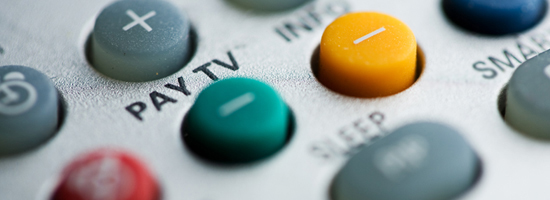
At this moment, especially, pay channels need to think what is important to them; happy customers or a lot of money. Because if they continue like this the money option is ending and that will result in less and less customers, read viewers, to whom they can sell their content and commercials.
Because…….
Brazilians are crazy about sports, but they are not crazy!!
Links:
Telecom and Pay-TV Services Markets in Brazil Set to Grow at 2.3% CAGR During 2017-2022
Number of subscribers of select pay TV providers in Brazil from April 2016 to April 2017 (in thousands)
Roeland van der Manden
More info you can find on his LinkedIn: www.linkedin.com/pub/roeland-van-der-manden , Check his website or follow him on Twitter AmsterdamProductions
mentioned:
GNT
Netflix
FOX sports
ESPN
Esporte Interativo
SporTV
NBA Global Games Rio de Janeiro
NBA Global Games Rio de Janeiro
An all American production in Brazil.
On the weekend of 17 October the HSBC Arena in Rio hosted the NBA Global Games. The match between Orlando Magic and Flamengo. We started our preparations on the Friday prior to the match by checking all the videos to be played out the day after and organizing ourselves. I’ve been working on the UFC events in Brazil and so I have some experience in working with Americans. Although this event was produced and directed by a Brazilian crew, the event is American and was broadcasted live around the world with as most important countries the USA and Brazil.
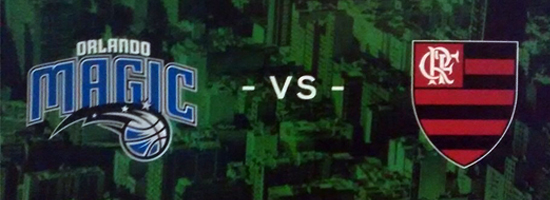
When working in Brazil for a national basketball match, no replay-wipe, or other videos are involved. The commercials are played out by and at the network as well as graphics, at the location there is only a small truck, 6-8 camera’s most, and about 15 crew members. No script is involved, nothing is pre-produced and almost everything is improvised. But, and that’s unfortunate, this might be the only way to broadcast basketball live in Brazil. Only if you keep the production costs that low it might be possible. As well as broadcasting a third division soccer match on a monday afternoon, yes that happens! Brazil is crazy about sports, and especially soccer.

Comparing this to an event like the NBA Global Games, which is a friendly match, is pretty different. On Friday, we got a script with all commercial breaks, and special clips coming from EVS, all sponsored of course. We played the sponsor videos out from EVS and not from the video mixer, which is normal in the US. This may be done this way because the director is also switching himself. So, there is no technical director (TD) to do that for him. Then we had some rehearsals, meetings, and checks until the end of the afternoon.
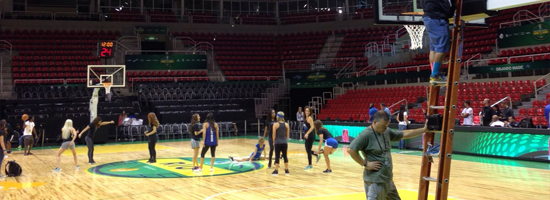 \
\
On the match day we had the last rehearsals and meetings about changes in the format and we got ready for the match. Basketball in the U.S. You can’t compare it to basketball anywhere else in the world. I’ve worked on several American productions and always some things surprised me, the attention to detail, the size of the production, how much money there is involved in American entertainment and that people are paying the amounts of money to watch matches. That’s just incredible! I watch it jealously and wished Brazil would have this same sports climate, because the culture they already have.
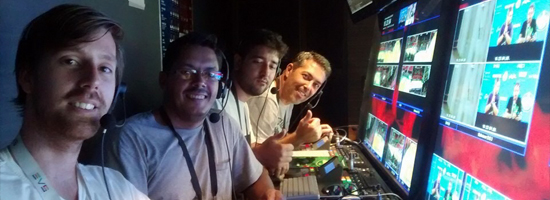
THE game Orlando Magic vs Flamengo:
Roeland van der Manden
More info you can find on his LinkedIn: www.linkedin.com/pub/roeland-van-der-manden , Check his website or follow him on Twitter AmsterdamProductions
mentioned:
EVS: website - facebook - twitter
NBA Global Games: website - facebook - twitter - youtube
Who earned some big R$ at the Worldcup?
Did Brazilians and Brazilian Audio Visual companies some business.

I remember before the Worldcup Soccer started the international media told that Brazil would not be ready in time. I visited the Itaquera stadium in São Paulo 1,5 month in front of the start of the Worldcup myself and that did give me more trust that all will be finalised in time. Of course lots of things had to be done, but Brazil would manage this, I never doubted that. I was afraid of Brazilian audio visuals and companies not getting jobs at the Worldcup because of their knowledge of English, because of the import-tax they have to pay for professional equipment while foreign companies just import their equipment temporary and not paying the import tax. Was I wrong? No, I was right and that is sad.

Several foreign companies and broadcasters took major parts of the Worldcup AudioVisual work. Like the Euro Media Group. They bring equipment, people (120) and their OB-vans to Brazil because their price is maybe better than Brazilian companies and that is weird. A company like NEP from the USA has an OB-van in Brazil, they work together with the Brazilian company Casablanca Online.
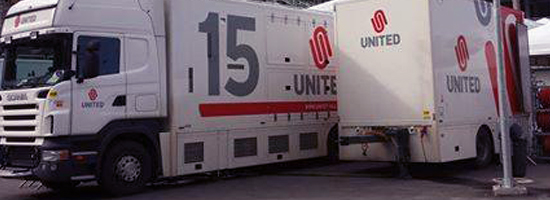
Ok…Globo SporTV had a new OB-truck you say? but they have money (a lot) and very important connections. Also in smaller productions we heard that most foreign ENG crews brought their own people and equipment to Brazil. Of course Brazilian audio visuals and companies were working at the event and even sometimes for foreign companies but still the 'sharks' did far better I think. There is always involvement of foreigners.
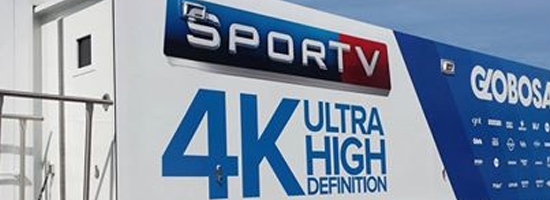
We are curious at Broadcast Brazil if you did work at the Worldcup, what was your function and if your payment was alright.
Next big event will be the Olympic games in Rio de Janeiro in already 2 years, now we all know what's about … be prepared, Let somebody with connections in Brasilia mention the position of the Brazilian Audiovisuals and stop this 'temporary import' for such events so also the locals get a chance. For all other i can just say.. rehearse your english till you are on a good level. When you try to work at big international events like Formula 1, UFC , X-Games and such let yourself pay in wages compared to foreign ones. They expect the same quality so let yourself pay for it i the same way.
UPDATE 30 of March 2015:
BBC -Worldcup leaves Brazil with bus depots and empty stadiums
UPDATE 25 of March 2015:
Rapid TV News - Globo profits dip despite Worldcup
René Schaap
More info you can find on his LinkedIn: br.linkedin.com/in/connectingmedia follow him on Twitter René_Schaap
mentioned:
World Cup soccer 2014
Euro Media Group
NEP
Casablanca Online
Olympic Games
SD - HD - 4K - 8K?
Can we all financially catch up in Brazil

My first column for Broadcast Brazil is about formats… no… i am putting it not right here. It is mainly about the speed of development in this last 10 years of audio visual formats and what this means for Brazililian Audio Visual companies.
When i started my work in Broadcast we have had some formats. U-matic, C-format and Betacam SP. The company where i worked for at that time had to switch their recorder between edit-suites and OB-vans all the time. The Betacam recorders where pretty expensive and my boss just did not have financial possibilities enough to keep them in one place. But life was easy and clear in the analog SD (standard definition) time and as a company you had the chance to earn back these recorders by renting them as much as possible for the next 5-8 years… or even longer.
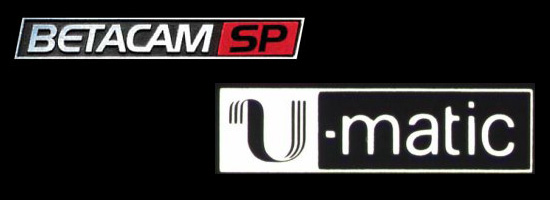
In 1993 we got Digibeta, Betacam SX in 1996 , Mpeg IMX in 2001. Meanwhile HD (high definition) was set into the market. Last 6 years HD became the standard for most Broadcasters, also in Brazil where the XDCAM HD format is used by TV Globo. In some parts of the country they still shoot and edit in SD but this is changing rapidly in Brazil.
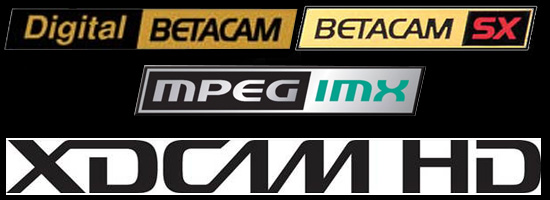
Last 5 years the industry also pushes a 3D format to Broadcasters and consumers, but is seams that this is not something that will stay much longer… why? I think because of those glasses you need to put on….. but also because 1 new format just started to become mainframe…. 4K, and the first 8K demo's could already been seen at the last 3 versions of the IBC exhibition in Amsterdam.
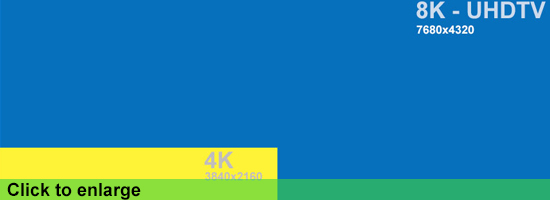
In the last 10 years most broadcasters needed first to step from SD to HD, some of them just managed this last year. Even a big event like Formula 1 has it's first year of HD, besides the camera's on the cars which are still SD. The first 4K equipment enters the market rapidly, it means that broadcasters have to invest heavily again?… by knowing the 8k format can be available in some years from now. I think for most broadcasters this is too fast, the investments are too big. Not only the equipment but all what is connected to it has to change. This means some troubles ahead for a lot of companies because, who has a bag of money or a sponsor can invest in these latest formats. The ones who cannot will see their company shrinking or even disappearing.
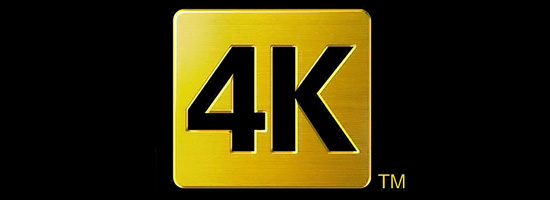
With the Worldcup 2014 Brazil coming up a lot of Brazilian audiovisual companies have to step up to at least HD. With the tax the government puts on pro-equipment it is already difficult to invest in Brazil. In 2016 the olympic games will be held in Rio de Janeiro and of course this needs to be transmitted in 4K.. some major companies will push this for sure. I think that most Brazilian Audio Visuals do not have that bag of money again in 2016 and will loose a lot of opportunities to foreign companies (the sharks) . For the local market i think it is more honest to transmit the Olympics in HD, just to give the Brazilian Audio Visual world some support so they can be the event at this very important event for the whole country.
videos:
photos:
Check also some 8K equipment seen on the IBC this year.
René Schaap
More info you can find on his LinkedIn: br.linkedin.com/in/connectingmedia follow him on Twitter René_Schaap
mentioned:
U-matic
C-format
Betacam SP
Digibeta
Betacam SX
Mpeg IMX
XDCAM HD
4K
8K
IBC exhibition
Mixing and Live Audio Acquisition For Television Sports
for television sport presents several changes
Maintaining a consistent sound level while presenting a dynamic fast paced event.
Keeping the audio coherent with the on-screen action.
Signal routing for transmission, replay, resale and audio.
Maintaining signal integrity, continuity and lip synch whether in mono stereo or surround.
Creating and monitoring multiple mixes simultaneously: Surround, Stereo, Mono, router feeds, alternate mixes for international clients, etc.
Depending on the complexity of the production, an engineer has between 5 hours and 5 weeks to set up the show.
For a typical NBA game one generally has 4 hours. This type of show will: be broadcast on 1 network, involve 1 field of play, have 1 announce position and possibly an “effects feed” for an associated second language or radio broadcast.
For the US Open Tennis tournament, the total equipment set up time is more than 3 weeks. This show involves over 125 networks, 5 fields of play, separate EFX
feeds from each tennis court in surround, stereo, mono as well as ambience only, over 100 different announce cabins, multiple interview positions, internet, internal stadium webcasts, and an all-encompassing intercom system, as well as many editing facilities, etc.
Live Mix techniques, in general:
Stems – audio subgroups of the broadcast mix.
Stems facilitate ease of operation for live acquisition. Establishing international sound sub-mixes, creating IFB
mixes and router feeds are all made easier through the use of stems. For editing and rebroadcast they are essential to recreate the sound of the show quickly and easily while allowing the editor to change segment lengths. Operationally, the subgroups are sent to DAs.
The signals are then returned to the desk as inputs, to allow access to auxiliary sends and to allow level manipulation without affecting the group master gain. This is very important for enabling isolated recordings for editing purposes, signal distribution to downstream clients and off line recording for replays with audio during the live broadcast.
1 EFX - sound effects or action. US television refers to action mics as EFX mics
2 IFB - interrupted fold back
3 DA – distribution amplifier
Grouping and processing
The Announce Group:
Here, I generally use 2 levels of dynamics.
At the group level, I insert a limiter, generally at a ratio of 10:1 a threshold of -1db, a medium slow attack time and a very fast release. This limiter acts as a safety, to prevent the overall submix from over-modulating. The insert point should be prefader.
Individual channels have “soft knee” compressors at ratios of 1.8:1 with medium attack and release times. The insert point should be prefader, post filter, pre-eq, if the console allows. These compressors have the effect of enhancing speech intelligibility and of keeping the announcers more “present” in the mix. Additionally, they provide an extra gain stage, if necessary.
Equalization normally entails a high pass filter set at 75Hz, a small, narrow “bump” in the low midrange somewhere between 450Hz and 800Hz to enhance the individual voice and a somewhat wider presence peak somewhere between 2200Hz to 3200Hz for clarity. A low pass filter is used in the event of high frequency noise problems that arise during broadcast or that cannot be solved in the allotted set up time.
Most of the processing is done to enhance intelligibility. Care must be taken not to allow harshness in the announcer voices, however.
The announce group (or groups) is then sent to a DA and returned to the desk as well as routed to various listening positions throughout the UM as well as to the video router or recorders as needed.
To fix the physical location of the announcers in the stadium, I place the main stereo ambient pair in the announce cabin (or just outside) so that the stadium noise arrives at the ambient mics at the same time as it arrives in the announce mics. This gives the home viewer the illusion that they are sitting in the announce cabin, watching the game with the announcers. (See section Ambience)
Ambience:
I normally build a separate ambience or crowd group. This allows me to limit or compress the crowd mics separately for routing purposes as well as allowing the compressors for the action mics group to be affected by just the action and not be affected by crowd response.
TV sports generally, are shown from 1 perspective point, with varying views added to enhance coverage. (Golf, track and field and gymnastics are notable exceptions to this generality) The perspective is generally the announcer’s viewpoint. To place the announcers in the stadium for the home viewer, one should use a stereo coincident or near-coincident pair. My preference is a matched pair of cardioid condenser mics in an ORTF configuration. (2 matched cardioid capsules set 17cm apart, at an angle of 110 degrees.) After experimenting with x/y and m/s pairs, I have found that the ORTF seems to best mimic human hearing. I place the mics so that they do not “hear” the announcers, but the arrival time of the ambient noise at the crowd mics is the same, (or almost the same), as at the announce mics. This is of course, limited to the announce cabin.
Depending on the event I use a hard knee compressor or limiter with a ratio of 4:1, a slow attack time and a fast release. The threshold is usually 2 or 3 dB before 0.
It is important to keep a consistent sound field relative to both level and phase (position). If this perspective is changed repeatedly the sonic image presented to the home viewer will be confused.
The ambient mics also serve to mask any sudden changes made to the mix.
Action Group
All sports have specific areas of concentrated action, where points are scored, where plays transition from offense to defence and back, where coaches shout instruction and where players communicate amongst themselves. It is relatively easy to aim microphones at these areas of interest. The audio mixer must choose the correct microphone for each specific area of play appropriate to the event and the setting.
I normally compress this group at a ratio of 4:1, a slight soft knee curve, slow attack, fast release times and a threshold of 3dB before 0.
I tend to classify the specific desirable sounds heard in most sports into 2 categories:
1) Thumps – low midrange (somewhere between 400Hz and 750Hz) ground contact, ball sounds, and physical contact.
and
2) Presence – midrange (somewhere between 1,25KHz and 4.5KHz) definition, voices, squeaks, pops and clicks.
By choosing the correct microphone, one can minimize the amount of equalization needed. In practice, however the perfect microphone is often not available and eq needs to be added to the channel signal. Too much emphasis or de-emphasis of a particular frequency can indicate problems: the monitoring in the audio mix room, a recurrent frequency in the arena, PA system equalization or other issues.
Following the action:
Most changes in the mix balance need to be fairly abrupt as the play moves around the field. To minimize the effect of rapidly opening and closing microphones, keeping a consistent tonal and level balance from channel to channel is essential. Select the primary or most important single source; optimize the sound and then balance the other sources to match. When mixing, I transition by leaving a mic open until the next source is also open, then the previous source can be faded out. This must be done almost instantaneously. When combined with the sound field established by the main ambient pair, the transitions are no longer apparent. The home viewers are unaware that anything is being altered in the mix balance; they simply hear the sounds that match the pictures.
Certain mics can be compressed for extra emphasis. Coach mics for example or any other sources that will isolate vocal responses. Other primary source mics may be suitably enhanced by compression. Compression may also be a necessity for microphones that will be isolated to the router and/or to tape machines. (see section The Routing Switcher)
Caution and restraint should be exercised in equalization and processing, however. Otherwise, the mix could become strident and unpleasant and/or the announcers will be masked by the game sounds. Overemphasis of any particular frequency band can also lead to transmission issues such as overlimiting and distortion. Overprocessing will lead to listener fatigue, and make the presentation unpleasant to listen to.
The Router:
The routing switcher is one of the most important tools in the mobile unit. Many different elements can be added to the show to enhance production choices and capabilities. By isolating reporter and interview positions, camera mics, and other possible replay sources it is possible to give the home viewer a unique perspective using replays with audio.
Depending on the routing switcher and control panel a variety of signals are available to the video tape operator. These are usually organized by video sources. In the case of a stereo show utilizing VTR’s with 4 audio channels for example: All the camera source buttons are programmed with an action/ambient stereo mix on channels 1 - 2 and a full program mix on channels 3 - 4. Another row of buttons presents video for the handheld cameras matched with an iso of the associated microphone on both channels 1 & 2. Additionally there are several other mixes generated from the console’s aux busses for prefade reporter mics, various interview positions and at least 1 extra stereo aux mix just in case it is needed. Router audio signals can be generated from groups, auxes, console direct outputs, satellite return feeds, and perhaps a betacam to access ENG or EFP footage gathered during the event. (see image below)
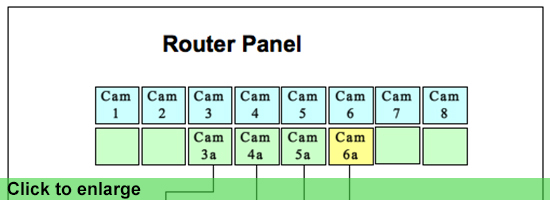 Router Panel
Router Panel
In the example shown above, assuming a 4 channel audio configuration, the top level of (blue) buttons are programmed so that channels 1-2 are a mix of the action and the ambience mics and channels 3-4 are a full mix of stereo program. The lower level of (green) buttons are programmed so that channels 1-2 receive the individual camera’s shotgun mic and channels 3-4 are a full mix of stereo program. The (yellow) button for camera 6 is an audio-only button programmed so that channels 1-2 are the pre-fade reporter’s mic.
For surround shows router configurations are of course, more complicated. In practice, audio elements are configured as stereo pairs and recombined in the mix desk prior to transmission. A surround synthesizer can be inserted across a stereo channel or mix bus to process stereo sources for surround transmission.
The routing switcher is fed audio signals from various outputs on the desk. Group sends, aux sends, direct outputs and multitrack outputs are fed to various inputs of the router for distribution e attribution for the video equipment, transmission, etc.
Many VTR’s are limited to 4 channels of audio. Hard disc video recorders like the EVS are often configured for only 4 audio channels as well.
When working in surround reproduction and transmission it is possible to use a surround decoder/encoder set to route a surround imaging matrix to a stereo pair. This signal is then routed through a decoder and played back as a surround source through the audio desk. This would enable a machine with a four channel configuration to be used to reproduce surround material. Of course only one playback machine would be available at any given time. (see image below)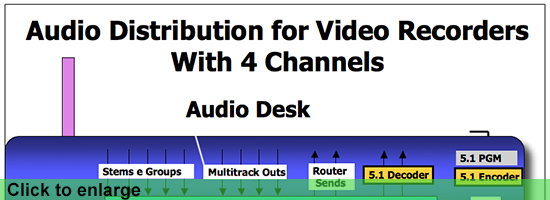 VTR + EVS">
VTR + EVS">
More sophisticated VTR’s and EVS recorders allow 8 channels of discrete audio recording.
It is therefore much simpler to maintain surround signal integrity in a live broadcast situation.
(see image below)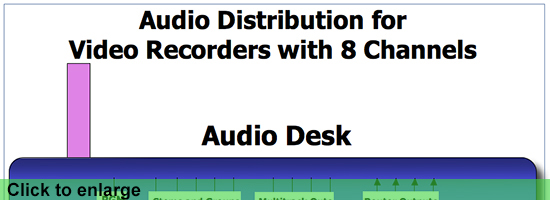
Microphones Positions for Specific Sports:
Basketball
Basketball is most often played and telecast from an indoor arena with a hardwood floor, concrete walls and (hopefully) thousands of animated fans. Indoor sports arenas are generally very reverberant and often any acoustic problems are exacerbated by using PA systems that are much louder than they need to be.
Lapel mics (Sony ECM 77’s or similar) are mounted behind the baskets, on the backboards, in the rubber frame that surround the edge. A short shotgun mic (Sennheiser 416 or similar) is mounted on the stanchion pointed at the free-throw line and a long shotgun (Sennheiser 816) is mounted on the handle of the handheld camera behind the end zone. If there is a handheld camera at midcourt it also would have a long shotgun. An ORTF pair is mounted at midcourt.
Tennis
Tennis is unusual in that although the action is oriented side to side like most other sports, the perspective presented by television is from one end. Therefore the stereo perspective is perpendicular to the net rather than parallel.
A stereo pair is set in the announce booth and another pair is mounted on the umpire’s chair to capture crowd and ambience sounds. A lapel mic is laced into the net. 4 short shotguns are mounted on short mic stands behind each baseline. Shotguns are also mounted on courtside cameras and beneath the umpire’s chair. 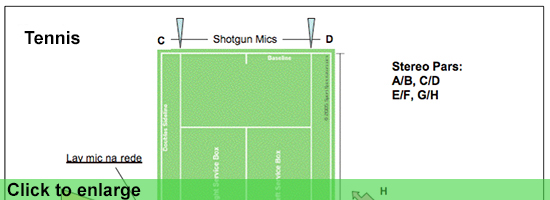


US Open Tennis Championship, 2007 Louis Armstrong Stadium, USA
Soccer
To cover soccer (football) a combination of operated and stationary mics are used. I place an ORTF pair in the announce cabin and use long shotguns mounted on tall poles for the response of the cheering sections.
Opposite the team benches are two mobile operated mics. All cameras on the field have shotgun mics. The difficulty lies in trying to capture sounds from a great distance. Compression can help accentuate individual mics. It is extremely important for the mic operators to wear headphones to monitor their equipment, to be very active and to anticipate the direction of play. Over exaggeration of sounds that are close to mics, such as corner kicks, will make the other, more distant sounds seem inaudible by comparison. A careful balance must be maintained.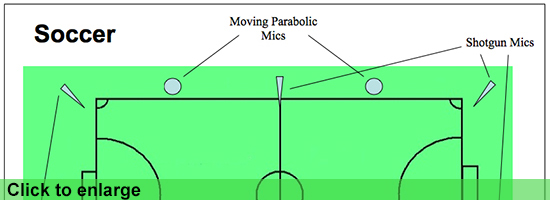
Golf
One of the most challenging sports to cover is golf. The arena for the sport is huge and there are only 2 areas where sounds are easy to capture: the tees and greens. Every microphone (or pair of mics) must be available prefader with processing as a router source. For a typical golf course, this would be 18 stereo tee mics, 18 stereo green mics, 10 wireless handheld cameras with mics, 8 wireless operated shotgun mics as well as ambience and crowd mics, about 62 stereo and surround microphone sources in all. Additionally there are between 1 and 6 announce cabins, 2 to 4 wireless reporter units, a trophy presentation area, 18 VTR’s, 4 EVS and edit suites as well. 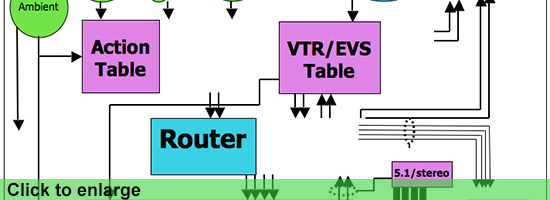
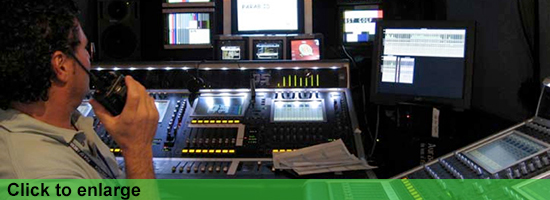
Verification of the installations with the Autor on the PGA championship, Medina, IL, USA, august 2006
This level of complexity is also common in track and field, gymnastics and Formula 1 racing. Each of these sports has specific peculiarities and challenges including:
Widely varying sound pressure levels,
Difficulties with microphone placement
Difficulties with signal transport and cable paths
Difficulties with weatherproofing
Multiple events occurring simultaneously
Many channels of wired and wireless mics and electric points
Many channels of wired and wireless intercommunications
Interconnections between analog, digital, copper and fiber optics
Facilities and crews that are shared between different broadcasters and production teams.
The process is never simple. Audio production for television requires significant planning in advance, flexibility on site, troubleshooting and rapid decision making while confronted with many variables. However, with careful organization each broadcast can be presented in its entirety with the accuracy and creativity that will create a sense of realism and excitement for the home viewer.
Daniel Littwin , director New York Digital.
contact: daniel.nydigital@gmail.com
São Paulo, Brazil
Mentioned:
ORTF configuration
EVS
Sony ECM 77
Sennheiser MKH 416
Sennheiser MKH 816